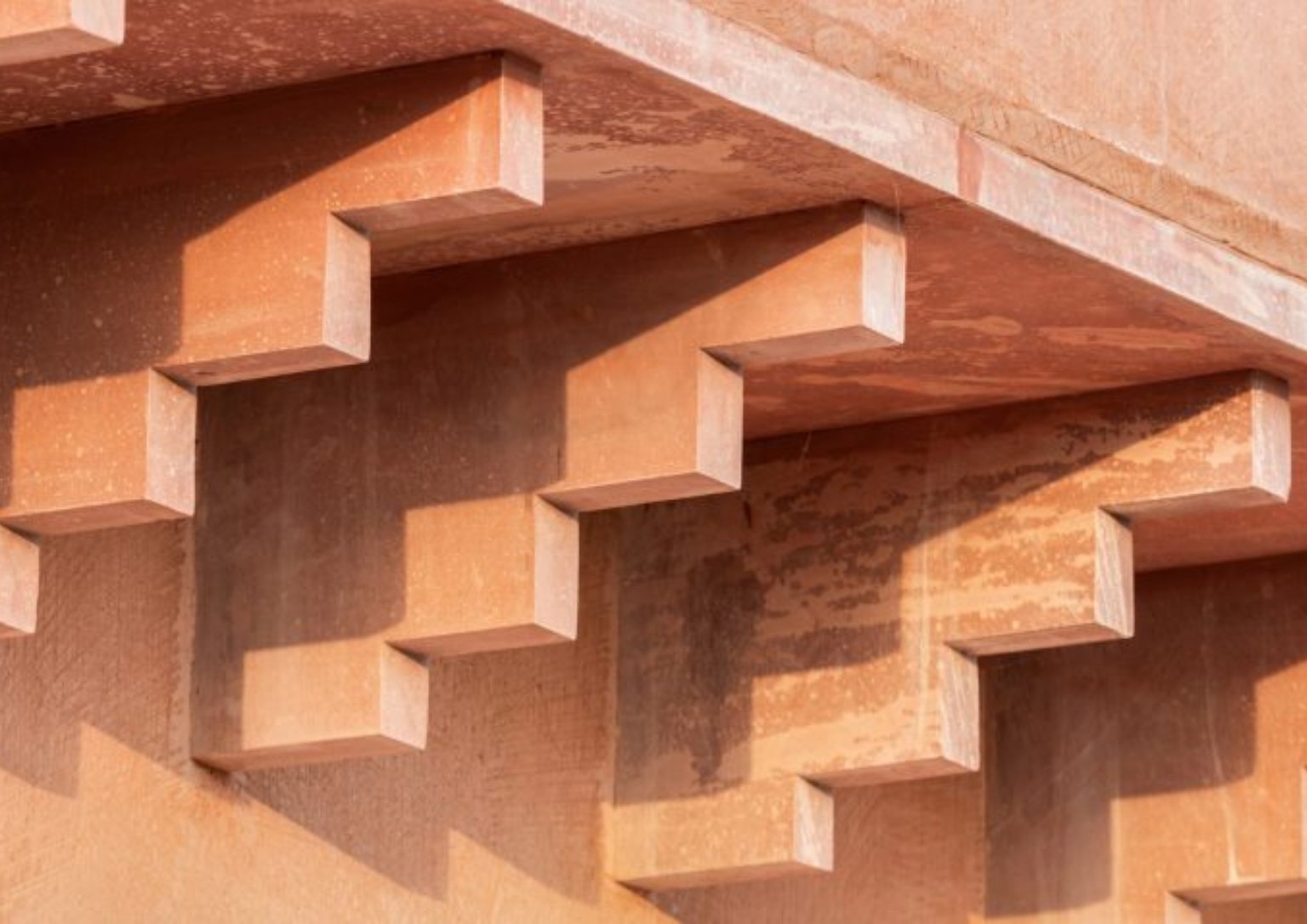
The Mud House Puts Earth Architecture At The Forefront Of Its Design
The Mud House is a one-story residence located in Alwar, a district between Delhi and Jaipur, close to the state containing the largest and deepest of India’s medieval stepwells. Sketch Design Studio, an India-based design firm, developed the 185-square-meter structure to evoke these multi-story wells, which date back to the seventh century and are distinguished by grids of diagonal staircases. It is a self-sufficient home created using permaculture and earth architecture concepts. The goal behind this earth-friendly dwelling is to revive the old building techniques that craftsmen employed long before the cement’s invention.
“Throughout the building process, we tried to focus on local artisanal building techniques and materials in the same form they were being used hundreds of years ago.”
Shipra Singhania, Sketch Design Studio Founder



Bringing Back Traditional Building Techniques
The sustainable Mud House is constructed of rammed earth walls, a thatch roof, and a stepwell-inspired design. By interviewing seasoned masons, the design team was able to conduct research and learn about traditional construction methods. Sketch Design Studio used the strategy they learned to build the farmhouse without the use of concrete, further reducing the structure’s carbon footprint. The walls are composed of rammed earth found on the property as well as blended lime and fenugreek seeds, which act as natural binders. Bagra, a waste product of lime kilns after processing limestone, is utilized as the mortar for the stone masonry. For centuries, neighboring villages have employed this ecological method of building with lime waste.
Moreover, Jaggery and Neem, a prominent Indian medicinal leaf, were also added to the combination to work as natural insect repellents. The building’s thatched roof is made of indigenous wild grasses woven into a pyramid shape. The rusty wall aspect that lends character to the built structure was achieved by combining brick powder with lime. To add, reclaimed stone is used in other parts of the building.
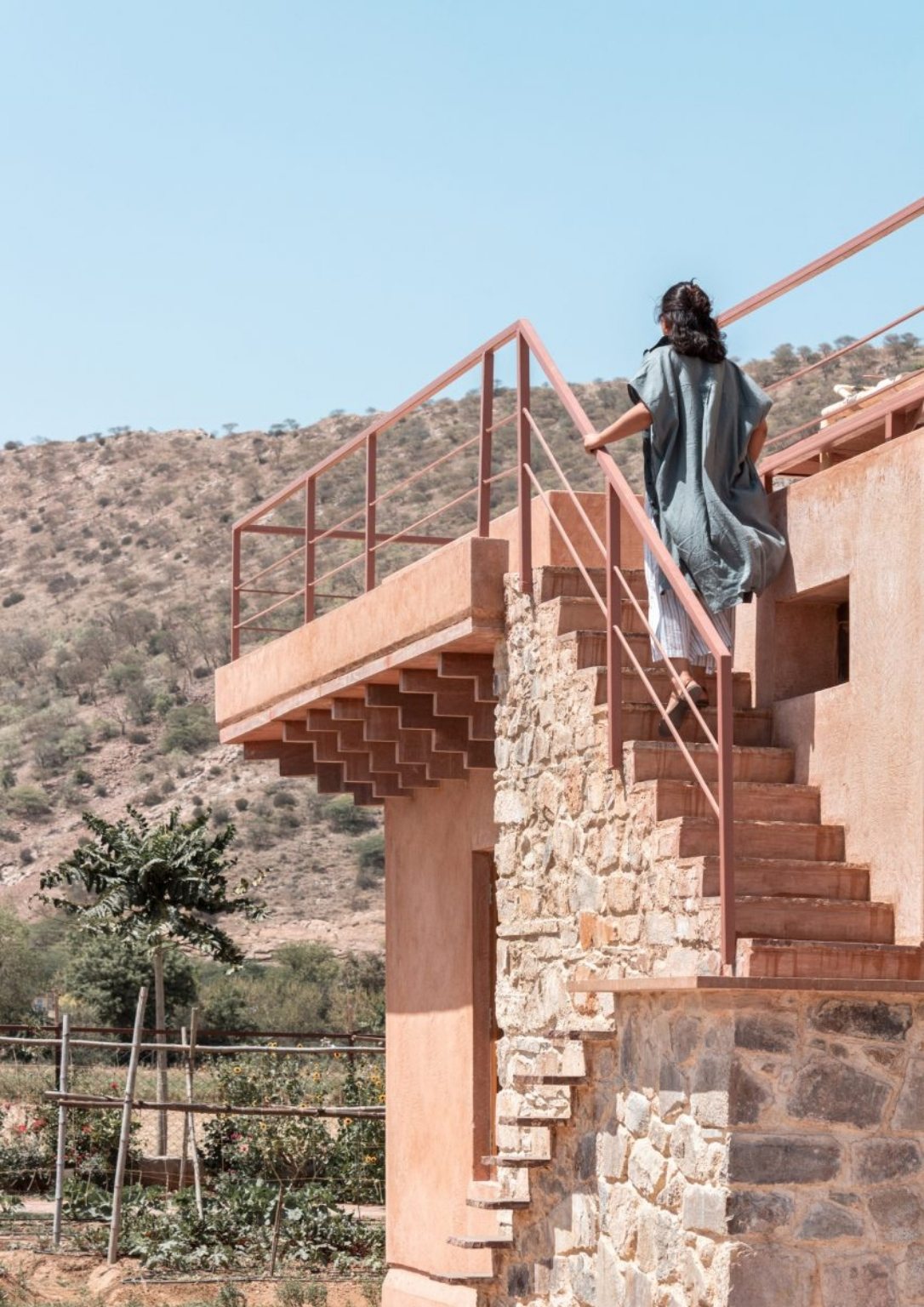
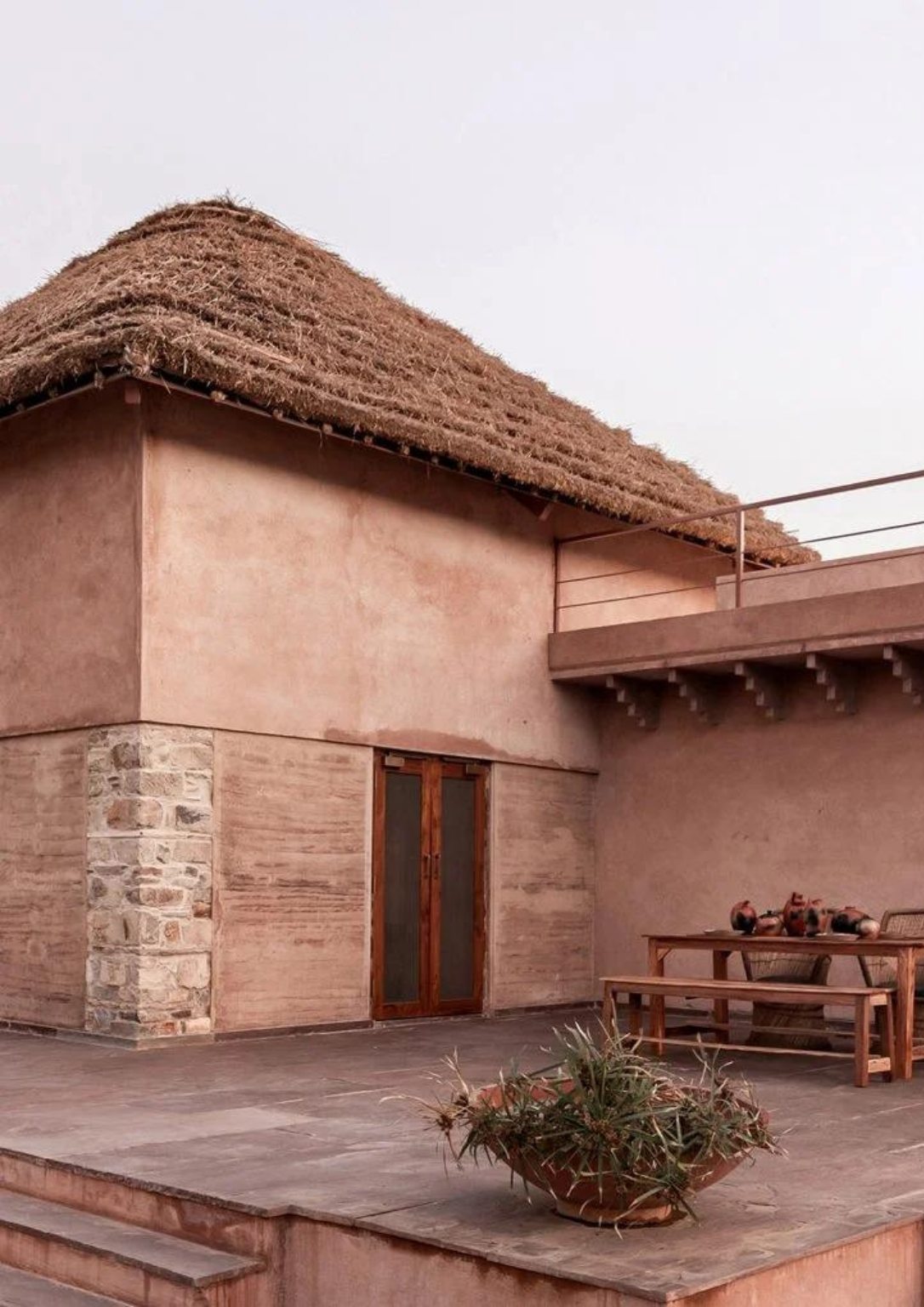
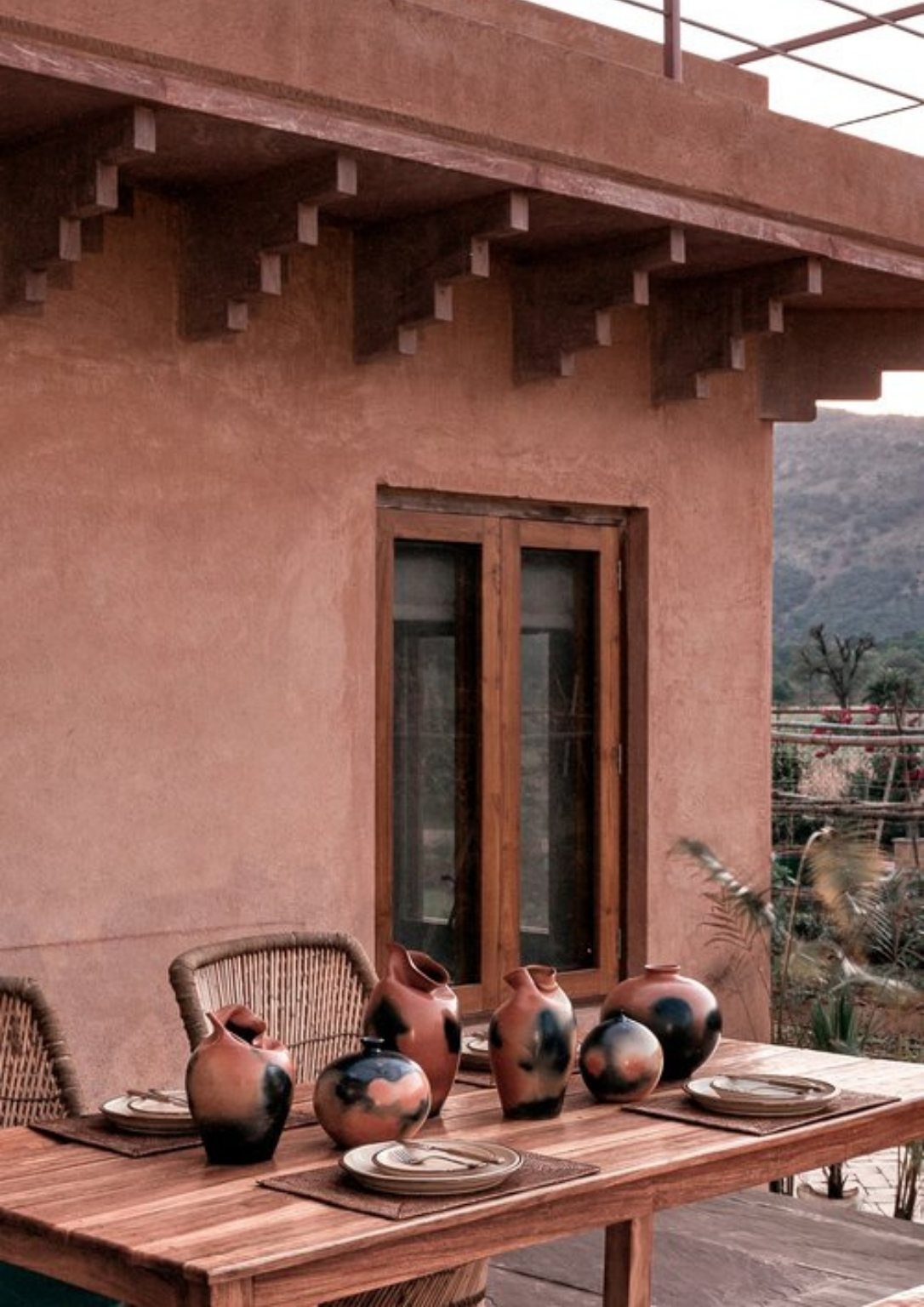
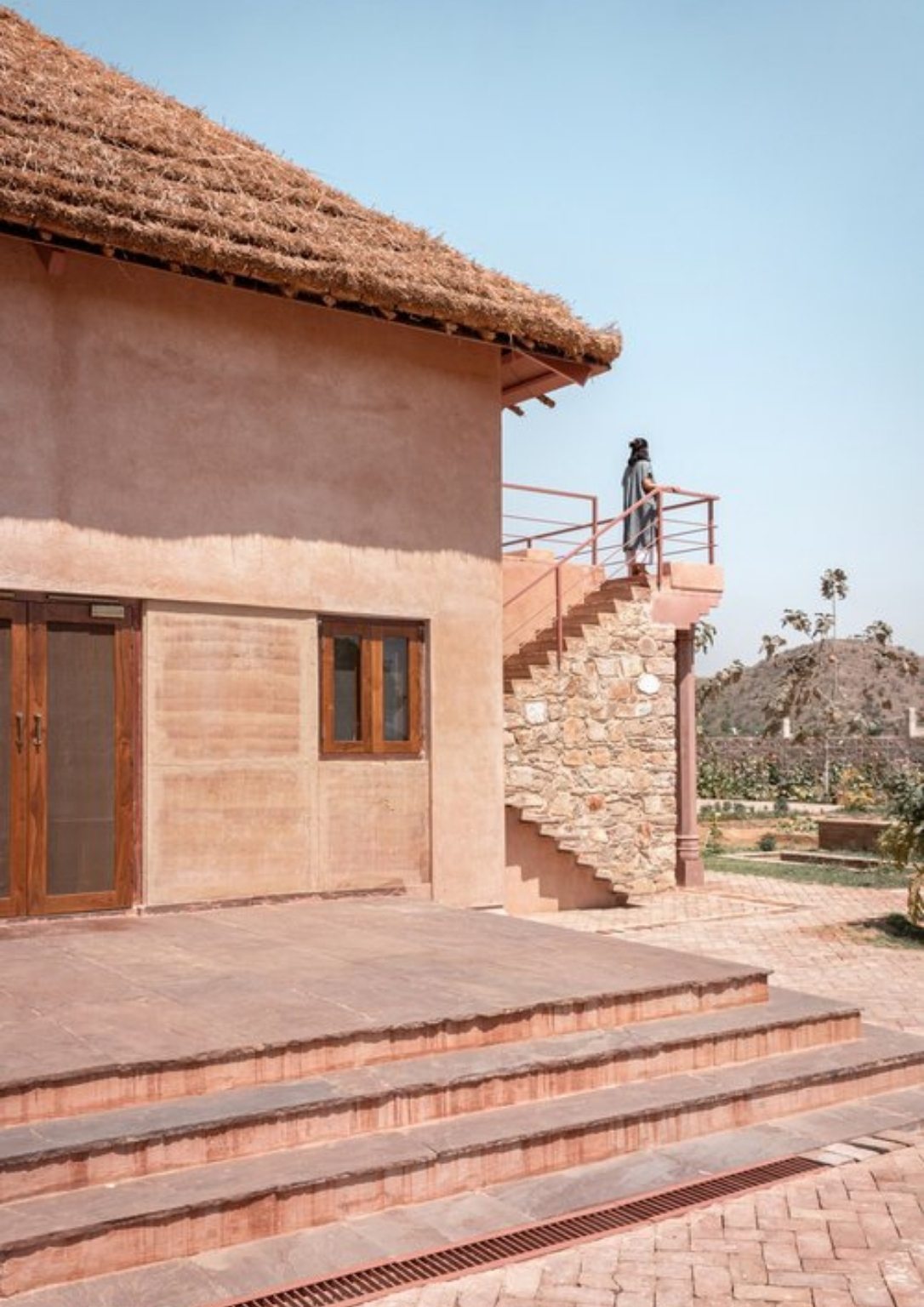
Adapting to Environment
The layout of the structure is intended to accommodate Alwar’s harsh climate. Certain portions of the Mud House are built to provide shade in the summer, while the other areas allow people to enjoy the sun in the winter. The house features two bedrooms and a central hall that leads to a grass lawn and an organic vegetable garden. Furthermore, two roof terraces are accessible by overlapping staircases accented by stone roof brackets with corresponding stepped patterns.
The timber-framed roof’s pyramidal shape adds drama to the combined living area and kitchen. In addition to shading windows, roof cantilevers increase the size of roof terraces. The interior walls follow the same rust effect created by mixing brick powder with lime. Locally crafted furnishings inside the home include cane lights and a daybed. Through the Mud House, the design team strives to bring architecture closer to Earth through the use of sustainable materials and traditional techniques.
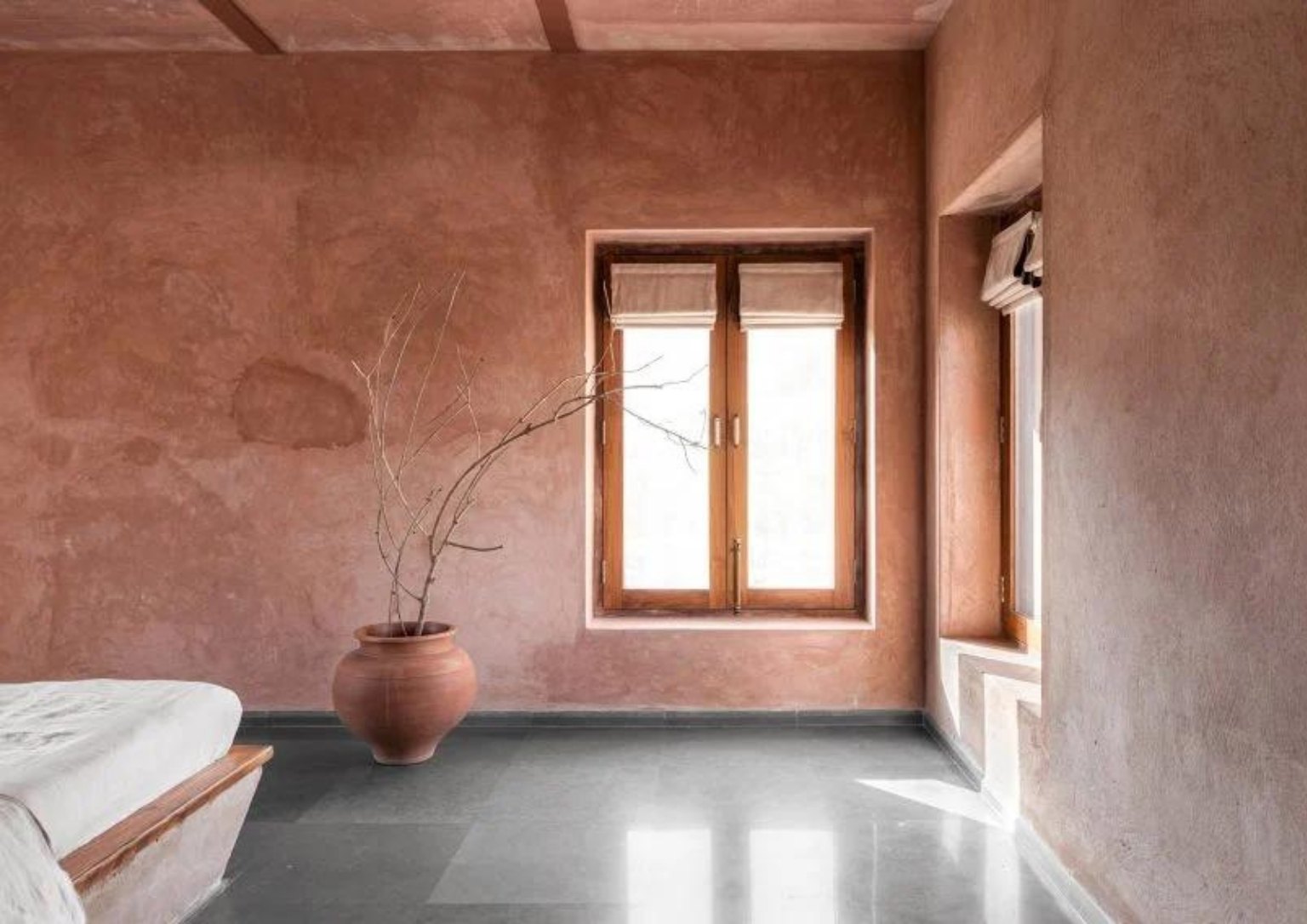

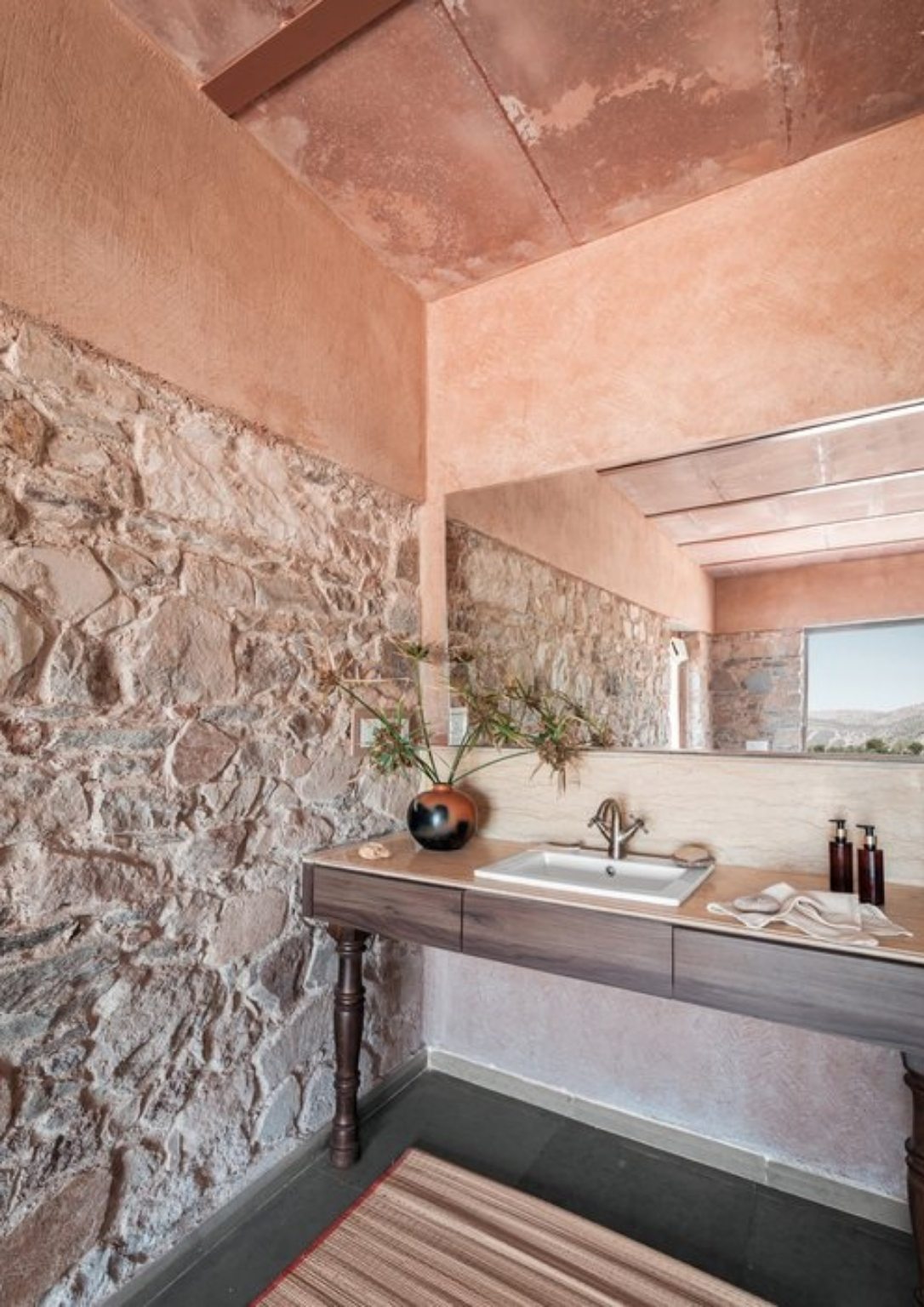
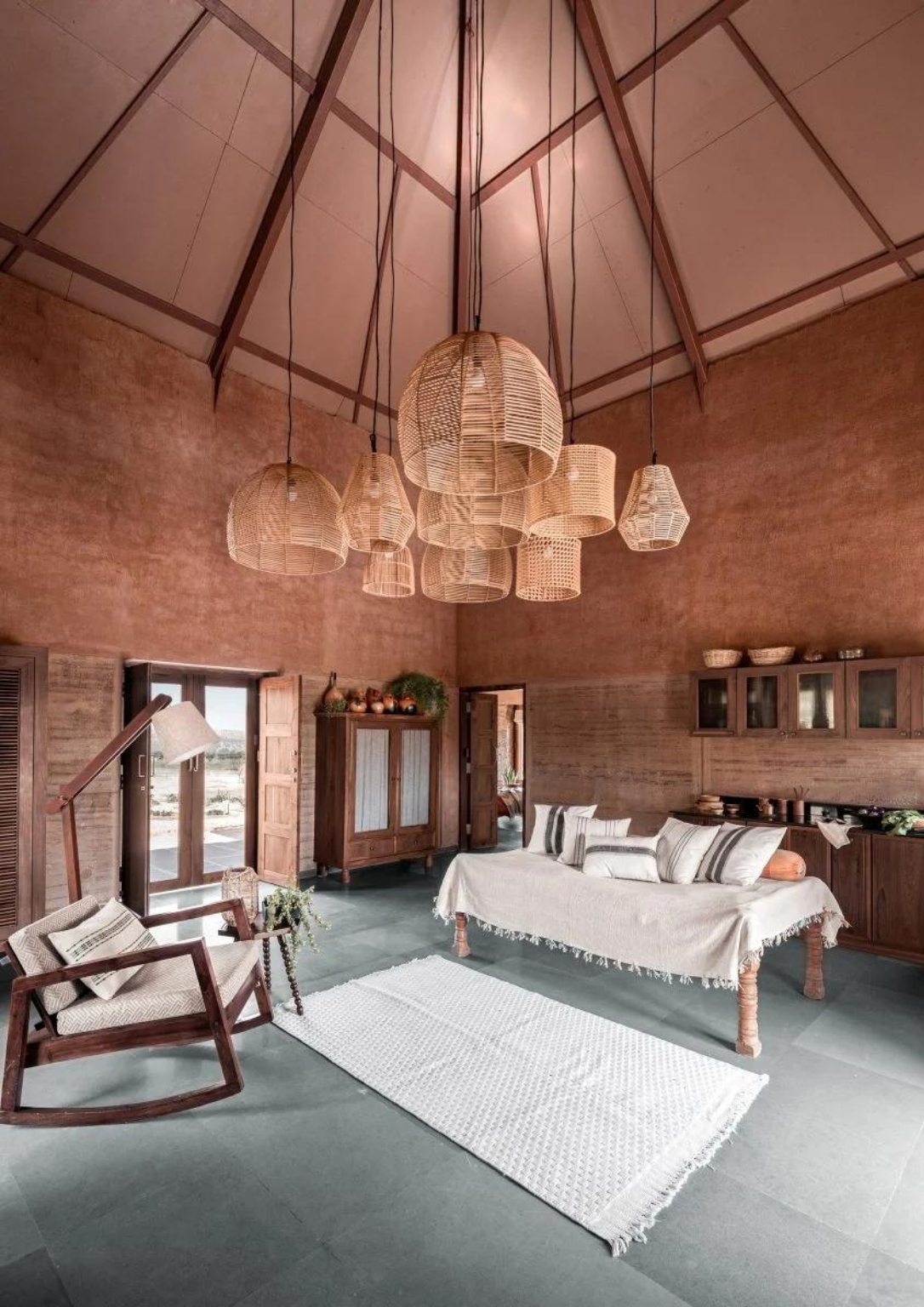
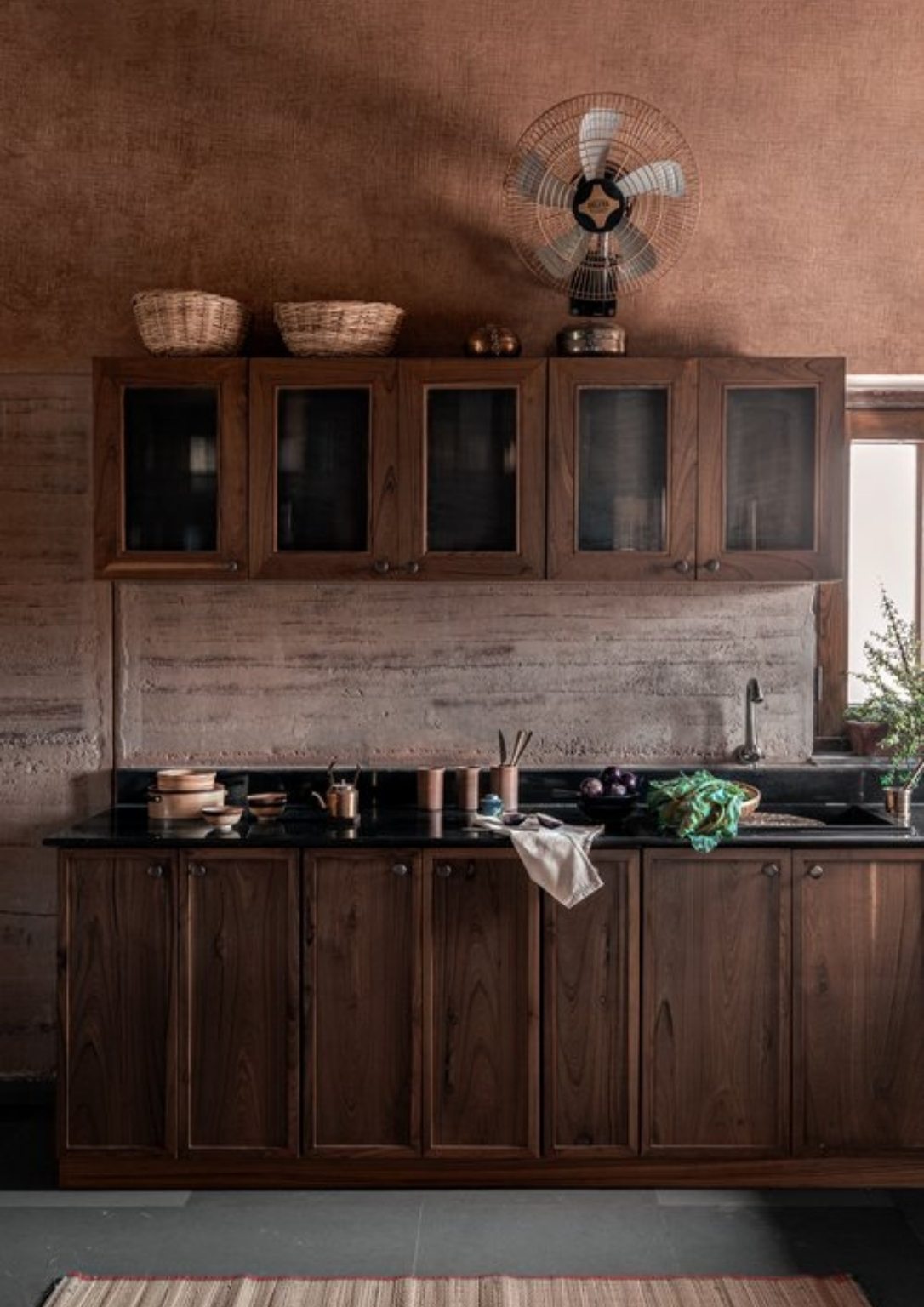

Photos courtesy of Jeevan Jyot.

